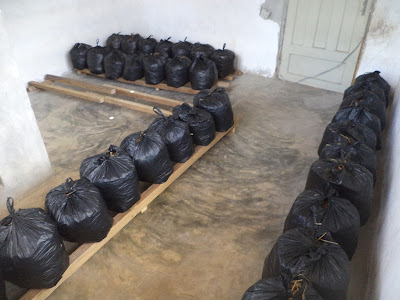EDIBLE WILD MUSHROOMS:
HEALTHY ‘MEAT’ OF THE FORESTS.
In Tanzania, mushrooms are well known and consumed in many households. In the countryside and forest regions, several species are collected for consumption. During the onset of the rainy season, when mushrooms are abundant, most people in rural areas collect them from the forests for home consumption and sell for extra income. The diversity of the natural Miombo ecosystems in Tanzania provides the rural population with varied and nutritious diet and potentially high standard of living due to mushroom trade (EC-FAO, 2010).
Thus, further study on the socioeconomic contribution of wild edible mushroom value chain in the rural communities is necessary to give an insight on the potential of wild edible mushrooms as a source of food, medicine and income from woodland with Brachystegia and Uapaca spp.Wild fungi with medicinal properties are also valued by rural people in several countries, though this is of secondary importance. Genera and species concepts were originally based on the narrower range of diversity found in temperate regions and these may require fundamental reappraisal as tropical species become better known.
Much of the original work on edible fungi has concentrated on the mycological or scientific aspects and, although much still remains to be done, the most significant gaps in information and knowledge concern social and economic aspects of use. Little is known about collectors and collecting practices, for example, or the relative importance of wild edible fungi compared with alternative sources of food or income. Sustainable production of wild edible fungi is not only about how to maximize yields but how to balance this resource with other uses and users of forests.
Wild edible species used in developing countries are poorly known. Some information is available from studies of close relatives in temperate regions. Russula and Lactarius occur around the world, for example, and knowledge of species in Europe can be applied with some caution and caveats to African species. The main problem is naming and recognizing species. Identification of species is mostly done by looking on features such as color, texture, smell, substrate where it grows and sometimes taste is used, naming of the species is done to keep memory and transfer the knowledge to next generation. Furthermore, the most commonly used species were those of the genera Afrocantharellus, Lactarius, Russula, Termitomyces and Amanita.
Inedible species can further expand the medicinal applications of mushrooms to the human population, making them valuable supplement to the few edible species already studied. In summary, since wild mushrooms are naturally abundant resource in most places in Tanzania, proper characterization is necessary to further improve its utilization in the rural communities. Steps should be taken to build capacity of folk taxonomists including documentation of edible, inedible and poisonous species found in their areas. Conventional characterization has proven to be more reliable in distinguishing species of wild mushrooms with sufficient precision to avoid the accidental mis-identification which may occur through the use of indigenous methods. Moreover, the rich biodiversity of wild mushrooms in Tanzania is only sparsely recorded. This is a potential source of increased food and nutritional security for the rural communities but only if appropriate characterization methods are utilized. Their wide geographical distribution, combined with the possibility of identifying new species, further justifies the importance of taxonomic characterization and documentation of edible and inedible wild mushroom species in Tanzania.
Mamaland Mushroom Farms (2015).
E-Mail:-Mamalandmushroomproject@gmail.com,
Phone: +255621-080300.
Twitter/Facebook/Linkedin/Google+: Mamaland Mushroom Farms.
Blog: Mamalandmushroomproject.blogspot.com
Fight Back Against Malnutrition, Save Lives.
Mushroom is Therapy. #Mushroom_Is_Therapy.
Fight Back Against Malnutrition,Save Lives. Mushroom is Therapy. #Mushroom_Is_Therapy.






































